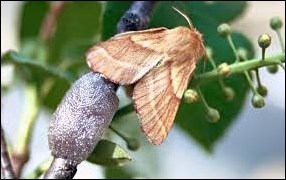Integrated Pest Management or IPM is an approach to managing pest problems while at the same time minimizing risk and effect on the environment. IPM is a long-term management plan that will prevent pest problems, minimize damage by utilizing a combination of control techniques. Techniques like biological controls, manipulation of habitats, utilization of resistant varieties and modifications of cultural practices and if needed chemical controls. Methods of pest management are chosen that minimize risk to human health, beneficial and non-target organism and the environment.
So what is a pest? A pest is an organism that damages or interferes with the life cycle of plants we desire in our orchards, gardens, landscape, homes or wild areas you may be enjoying. Pests include organisms that impact our animal or human health. The pest itself may be a nuisance or may be a vector that transmits disease or causes damage to the water quality, animal life or any part of the ecosystem.
Those that practice IPM are taking action to keep the pests from becoming an issue in the first place. It is not an instant technique to eradicate pests but instead looking for a wide variety of methods to ensure the pest is causing minimal damage. There are a number of accepted steps to IPM but bear in mind that each pest problem is individual in nature.
1. Monitoring or scouting - it is essential to know what is happening in your home and garden if you are going to be successful at IPM. A regular, methodical inspection of the landscape to detect the presence, concentration and type of pests.
2. Pest identification - correct identification of the pest causing the problem is half-way to the solution. An understanding of the life cycle, the stages of the life of the pest that cause damage as well as good knowledge of the plants affected.
3. Assessment - utilizing information form scouting and identification, as well as understanding the level of acceptable damage will determine the course of action.
4. Implementation - once a management strategy has been selected, it should be employed in a timely manner. This will keep problems to a minimum, and will ensure the right strategy will be used at the right time, in the right amount at the right place.
5. Evaluation - review what worked well and what didn't to ensure best practices are followed.
Ideally, IPM will be: least disruptive of natural controls; least hazardous to human health; least toxic to non-target organisms; least damaging to the environment; most likely to produce permanent reduction of the pest; easiest to carry out effectively; cost-effective in the short and long term.
Let's look at an example of IPM that may resonate with you. Many areas this summer were inundated with the tent caterpillars. Most of us did not notice there was a problem until the worms were huge and causing major damage. Entire areas were stripped of leaves and many of these little critters met their end. Then they pupated and we saw huge populations of little brown moths – the adult from of the larvae or caterpillar that causes the damage. These moths lay eggs on their choice trees and the eggs will overwinter and hatch out next spring. Once eggs are laid, the moth will die. Using an IPM strategy you may consider a number of solutions. Watch for a future column that will further delve into IPM strategies surrounding the tent caterpillar and other common pests.
Hanbidge is a horticulturist with the Saskatoon School of Horticulture and can be reached at 306-931-GROW(4769); by email at growyourfuture@gmail.com or check out our website at www.saskhort.com
Join us on our Tour to Manitoba in early August. Go to saskhort.com for more information.
Register now for distance courses leading to a diploma or a certificate. Study with us or study in the comfort of your own home! Please contact us for further information or visit our website at saskhort.com
Let our team of experts help you to create the outdoor living area of your dreams. Our team of educated and skilled experts can build or renovate your new or existing landscape. Including decks; gazebos; sunrooms; solariums; retaining walls; fences; irrigations systems; and regular maintenance.
Target Certificate in Horticulture Program ... learn from the comfort of your home and gain the skills and education to work in the field of horticulture. Graduates from SSH are recognized by the industry as superb additions to help their horticultural business grow!
Like us on facebook at Saskatoon School of Horticulture and get in on all the events coming up and follow us on twitter @horticulturepat.



